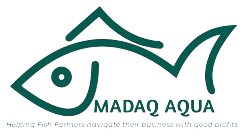All in all, have you ever considered getting into commercial aquaculture but felt confused trying to turn a fish farming operation profitable? Producing high-demand fish species like tilapia, catfish can be an extremely profitable business once your systems are set up correctly.
However, breaking into aquaculture is filled with major obstacles for newcomers from selecting the right land or ponds to choosing species and production methods that maximize return on your investment.
In this comprehensive guide, learn the secrets from industry experts on how to set up a modern fish farming business focused on profitability from day one.

Choose an Ideal Site
Your geographic location and available land or pond area play a massive role in running a cost-effective fish farm. Seek sites with:
– Access to Clean Water – Having a reliable source of contaminant-free freshwater is essential for productive fish farming.
– Suitable Climate Conditions – Consider oxygen saturation levels in water based on temperatures to select sites with adequate dissolved oxygen.
– Proper Drainage and Terrain – Choose locations with soils and drainage capacity to avoid issues like flooding or pH fluctuations.
Weigh Factors of Recirculating Aquaculture Systems (RAS)
The RAS technology enables fish production in a controlled indoor setting while filtering & reusing up to 95% of water. Advantages of RAS include:
• Year-Round Production Cycles: Avoid weather or season-related slowdowns.
• Predictability & Reliability: Fine-tune inputs like feeding, oxygenation & lighting for stability.
• Biosecurity & Disease Prevention: Isolate & protect stock from environmentally borne illnesses.
• Select From Any Species: Focus on premium value fish VS just what thrives locally outdoors.
• Higher Stock Densities: Higher total volume can be harvested annually.
Determine Your Target Fish Species
Pursuing popular species like tilapia and catfish that see consistent high demand nationally is key. Factors to assess include:
Growth Velocity – Fast-maturing varieties including Catfish reach target harvest weights sooner (4-6 months typically).
Feed Conversion Rates – Focus on species like hybrid striped bass that are efficient at converting feed to body mass.
Resilience to Disease – Robust fish species need fewer interventions, saving on treatments.
After comparing species based on these key criteria alongside ideal climate/water conditions for your location, identify 1or 2 fish types to produce.
Design Your Aquaculture System Setups
Choosing production systems capable of generating 10,000+ kg of fish annually is vital to profitability. Evaluate these options:
Earthen ponds: Simplest & most affordable systems to construct however, output varies based on weather/seasons & water oxygen levels.
Tarpaulin ponds: easy to manage and observation of fish is assured.
Cage/Pen Culture: Submerge large mesh cages in rivers/lakes enabling high stocking densities but requires good quality feeds & monitoring.
Recirculating Tank Systems: Costs more upfront yet its setup allow fine-tuned production volumes year-round.
In summary, you can have a combination of these into your overall aquaculture infrastructure depending on your available land resources. Just ensure your setups enable keeping precise records of inputs & fish growth per enclosure.
Implement Feed Management Strategies
Feed constitutes over half your operating expenses. While commercial feeds optimized for species size exists beyond this you can save alot by formulating cost-efficient feeds yourself.
Strategies like computerized automatic feeding, home mixing base ingredients, and converting byproduct or insects into feed offer nutritious alternatives to lower this major cost center.
Master Water Quality Control
Finally, the saying “quality water means quality fish” is true when it comes to maximizing health, growth rates and minimizing fish losses. Carefully monitor parameters like:
• Oxygen Levels: Depends on temperature; supplement low oxygen.
• Nitrogen Levels: Ensure proper pH balance & filter clean regularly.
• Salinity & Hardness: Species have ideal dissolved mineral needs.
• Toxins & Metals: Test for its presence and clean out systems when detected.
• Algae Concentration: Moderate amounts are acceptable if stable.
Correct any suboptimal conditions immediately to avoid cannibalism and maintain peak feed intake. As a result, purchase a water test kit so as to ensure adequate check and regulation of these water quality parameters.
Avoid Disease Outbreaks
At times, even the most diligent water management and biosecurity measures cannot prevent fish stocks from contracting diseases that can destroy whole populations quickly. Get ready for potential outbreaks by quarantining newcomers and also isolating new fish before joining them into the general tanks or ponds.
Process Products to Maximize Profit
A moneymaking aquaculture business comprehends client preferences for purchasing fish based on ultimate use. Hotels, restaurants, and other bulk buyers mostly favor gutted, gilled fish in bulk freezer containers for simplicity of food preparation.
Moreover, breaking into aquaculture is filled with major obstacles for newcomers from selecting the right land or ponds to choosing species and production methods that maximize return on your investment, you can choose to provide;
• Whole Dressed Fish: Freshly harvested, intact dressed fish command premium prices from restaurants and markets.
• Filleted Cuts: Although, filleting then vacuum packing adds labor, it boosts value. Popular for fishmongers.
• Value-Added Products: Smoked fish, sausages, and breaded fish items bring higher profits but involve more processing expertise.
• Live Fish: Distributing live fish to markets in aerated tanks preserves freshness and quality for demanding consumers.
In conclusion, while selling fish once annually at harvest time is acceptable, an aquaculture entrepreneur finds ways to generate multiple revenue streams from one production through Secondary processing.
Now that you have a comprehensive blueprint covering all the mission-critical aspects of launching and scaling a lucrative fish farming venture, which part are you most excited to tackle first? Let me know in the comments your top priority area!
